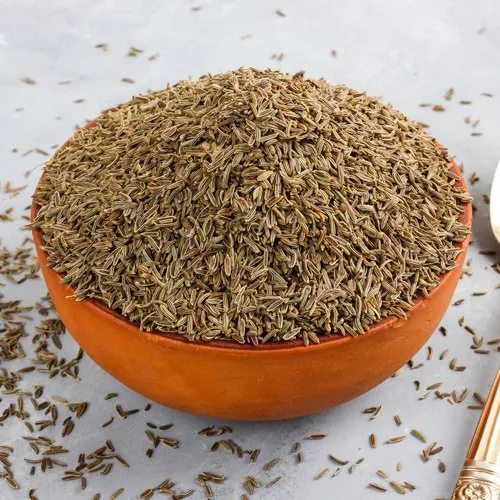The price of cumin seeds (jeera) in Gujarat continued to soar and touched a new high of Rs 35,500 per quintal Thursday, with the prices soaring by Rs 5,000 in 10 days.
The rise in prices come amid apprehensions of low production in wake of a drop in the sowing area due to adverse weather conditions.
Machine-cleaned jeera fetched Rs 35,500 a quintal at the Unjha Agricultural Produce Market Committee (APMC), Asia’s largest jeera , in Mehsana district Thursday. The modal price was Rs 33,000 on a day when arrivals were around 3,800 quintals. Last year, the average price of jeera was around Rs 18,000 per quintal.
Explaining the trend, Sitaram Patel, a jeera trader at the Unjha APMC, stated: “Firstly, cultivable land for jeera has dropped by more than a third. Then, temperatures have been rather warm even till late December for this weather-sensitive crop. On the other hand, the previous season’s carry-forward is not that large and so, future contracts are being struck at high rates, inflating the prices in the spot market.”
As per data available with the Unjha APMC, prices touched Rs 25,000 on December 2, a high not registered before.
The trend continued and prices shot to Rs 30,000 on December 23, Rs 33,500 on January 3 and currently, hover at the Rs 35,500 mark. Thus, the prices have increased by Rs 10,000 in around a month’s time.
“A warm November and even warmer December hampered the growth of jeera sown this year. This is likely to delay the harvest. Therefore, instead of the routine mid-February, we are expecting that the new crop will start arriving in the market only from March. This apprehension of a shortfall is also contributing to the high prices,” Patel said, adding: “There is high demand for jeera in the overseas markets also because otherwise known jeera producers Turkey and Syria are faced with political unrest which has hampered the production rates there. India remains the only global supplier.”
Jeera is sown in October-November and harvested in February-March, with March-April being its peak marketing season. Gujarat accounts for around 65 per cent of the country’s jeera production while the rest comes from neighbouring Rajasthan. As per a state government estimate, jeera production in Gujarat in 2021-22 was 2.21 lakh quintals.
Explaining the low availability of land for cultivation, Patel sums up three factors: “Rapid urbanisation is eating into tractable patches. Then, there is global warming. This is a vicious cycle which leads to delayed harvest, which in turn delays the sowing of the next crop. The production does not benefit weather conditions optimal for its growing and then, the entire process slows down and the yield suffers loss of premium quality. Lastly, global geo-political tensions have put the entire supply pressure on India. The government must work on proactive incentives for jeera cultivators.”
Also Read: Man Who Urinated On Woman Flyer Sacked










